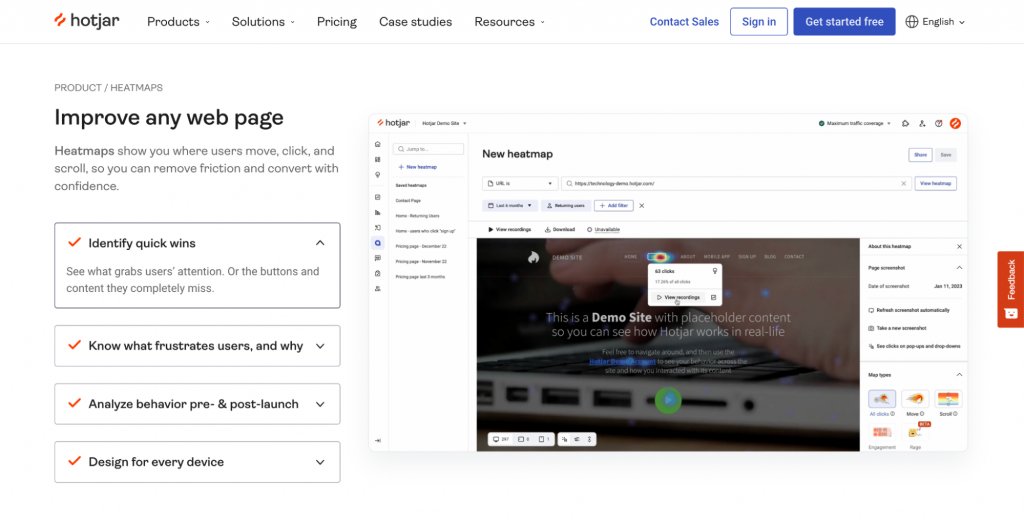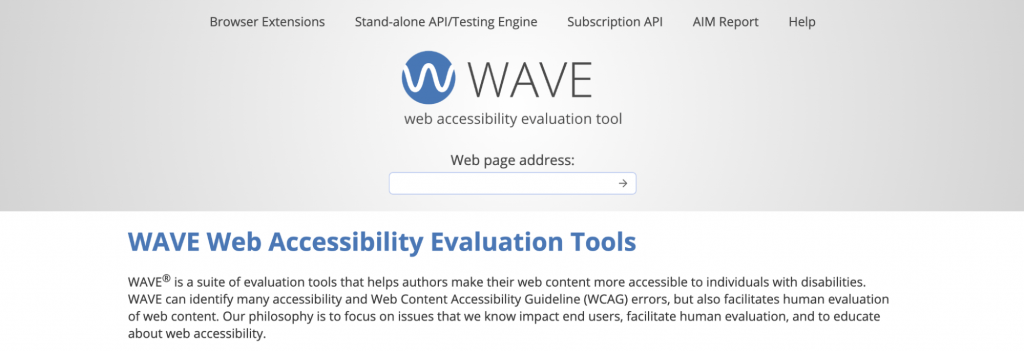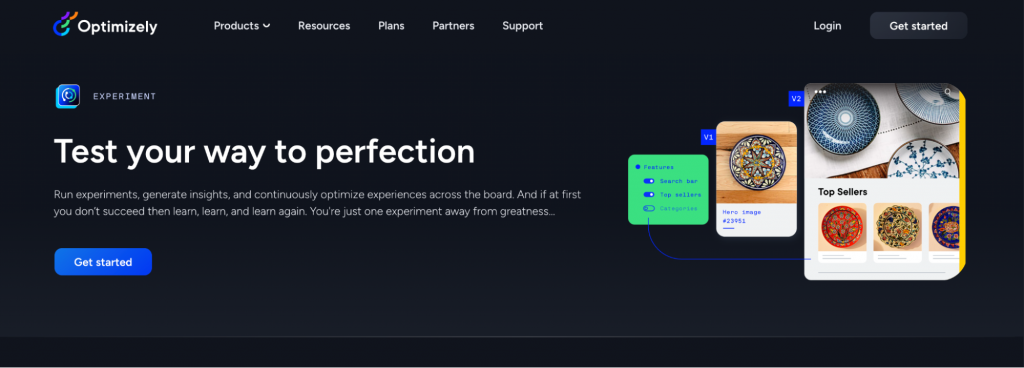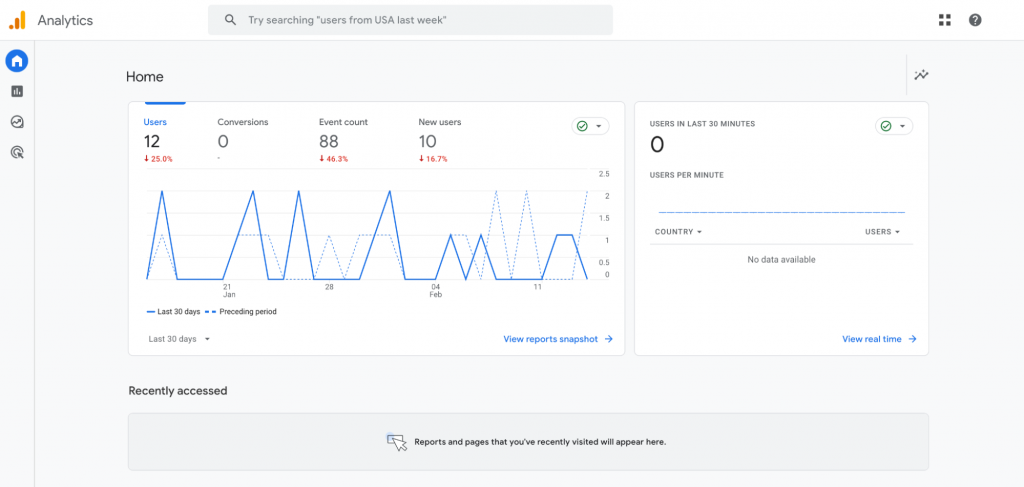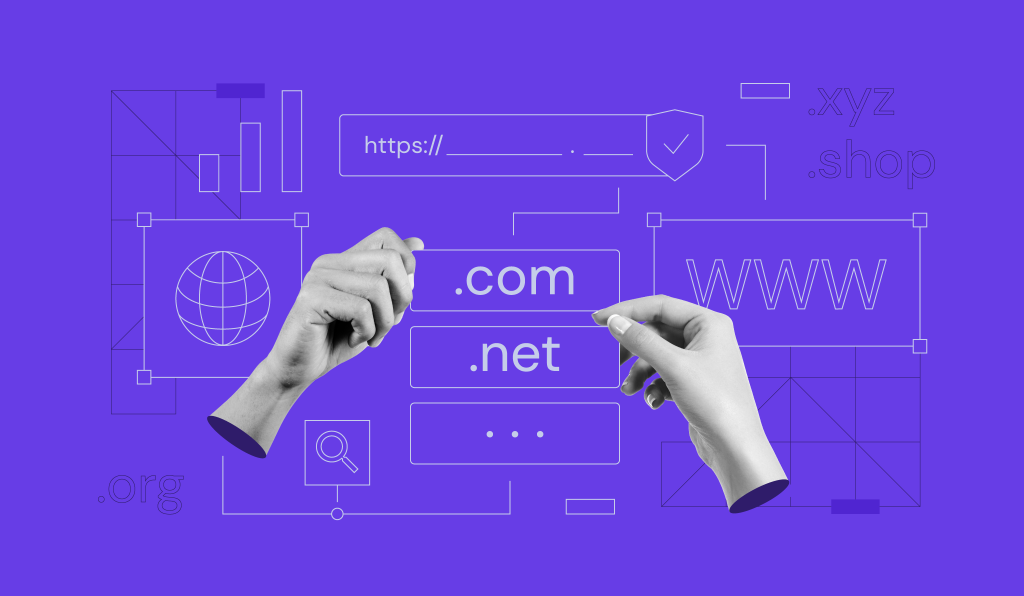What Is UX Audit and How to Conduct It in 2025

A successful UX audit helps you understand your website from the eyes of your visitors, pinpointing exactly where your site design might be falling short and how you can improve it.
This guide aims to demystify the UX audit process, breaking it down into manageable steps. We will demonstrate how to create an effective UX audit report that communicates your findings in a clear and concise way. You will also learn which tools you should use for your UX review.
Whether you’re just starting out or looking for a refresher, our UX audit checklist will help you create a better customer journey to your website and enhance the browsing experience.

What Is A UX Audit?
A user experience (UX) audit is a thorough review that assesses how people interact with a digital product, such as a mobile application or a website. Through usability testing, real users provide feedback on their experience, highlighting what works well and what doesn’t. This process is vital for suggesting improvements that can make the product more user-friendly and engaging.
How Do You Conduct a UX Audit In 6 Easy Steps?
When you conduct a UX audit, the aim is to pinpoint any usability challenges actual users face. Here’s how to get started:
1. Define Business Objectives
Understanding the objectives of your brand and digital presence, particularly your website, is crucial in setting a clear direction for a UX audit. This understanding ensures that the audit’s recommendations are not only aligned with the overall business vision but are specifically tailored to enhance your online business strategies.
Begin by conducting thorough research on your business’s online presence, focusing on your website’s role in your business model, how it drives revenue, and its importance in delivering value to your customers. Explore how your website serves as a primary touchpoint for engaging with your target audience and how it positions your business online.
Example
Let’s say you have a small online shop where you sell handmade crafts. Begin by ensuring you understand what makes a good website. This will guide your audit objectives, ensuring they’re aligned with proven web design best practices.
Your eCommerce website is where people find and buy your items, so it’s key for making money and showing customers what’s special about your crafts. Think about the user’s perspective – how visitors use your site to look at products, learn about your craft, and make purchases. This first step helps you see the big picture of how your site helps your business and your customers.
It’s important to align the UX audit with your website’s specific objectives, such as improving online conversion rates, reducing bounce rates, or enhancing the online customer journey. This alignment guarantees that the UX enhancements will have a direct and measurable impact on your business’s digital performance and, by extension, its overall success.
2. Understand User Objectives
Creating user personas is useful in getting to know your users. It helps in tailoring the user experience to meet their needs and expectations, enhancing user satisfaction.
Develop detailed user personas that represent the various segments of the product’s user base. Each persona should include demographic information, user needs, pain points, and behavioral patterns.
Remember to empathize with users to tailor the UX to meet their needs effectively. Understanding user objectives can reveal mismatches between what the business offers and what the users actually need.
For a deeper understanding, consider conducting user interviews to complement the data you’ve gathered. This direct engagement can reveal nuanced user needs and enhance your personas with real-world insights.
3. Analyze Existing Data and Metrics
User interaction data is a goldmine of insights. Analyzing this data helps identify user behavior patterns, bottlenecks, and areas where users face challenges, guiding the focus of the UX review.
Dive into the analytics to uncover how users interact with the product. Look at metrics like bounce rates, conversion rates, session duration, and heatmaps.
Identify patterns in user behavior that indicate successful interactions or reveal bottlenecks causing frustration and drop-offs.
For example, imagine you’re analyzing user behavior on an eCommerce clothing website. You notice that a significant number of users add items to their cart but then abandon the website on the checkout page.
This pattern could indicate a bottleneck causing user frustration, possibly due to a complicated checkout process or unexpected shipping costs being revealed late in the process. Addressing these issues by streamlining the checkout process and being transparent about costs upfront could reduce drop-offs and improve the overall user experience.
In your UX audit process, take a moment to review the outcomes of previous UX audits. Using historical site data can pinpoint usability issues, track changes over time, and validate the effectiveness of past UX improvements.
Analyzing past reports and subsequent design changes can offer valuable lessons and prevent the recurrence of similar usability issues.
4. Perform a Heuristic Evaluation
When you conduct a UX audit, the heuristic evaluation involves assessing a product or website against established usability principles (heuristics) to identify usability flaws.
To conduct a heuristic evaluation effectively, start by assembling a diverse team with different backgrounds and expertise. This team could include designers, developers, product managers, and even users to ensure a well-rounded view of your website.
Next, select a set of heuristics or usability principles to guide your evaluation. Common choices include Jakob Nielsen’s 10 Usability Heuristics, which cover aspects like user control, consistency, and error prevention.
For instance, clear and informative error messages can help users understand what went wrong and how to recover from an error. This includes avoiding technical jargon – a “405 Method Not Allowed” error code might be confusing to most users.
With your team and heuristics in place, systematically go through each part of your website, from the landing page to the checkout process, assessing it against these principles.
Once the evaluation is complete, gather your team to discuss the findings. Prioritize the identified usability issues based on their impact on the user experience and the ease with which they can be fixed.
Focus on “quick wins” – problems that are easy to solve but have a significant positive effect on usability. Also, consider high-impact changes that might require more effort but will greatly enhance the overall user experience.
Document these priorities in a list or a matrix to guide your next steps in improving the product. This organized approach ensures that you tackle the most critical issues first, gradually enhancing the usability and satisfaction of your product.
Remember that a heuristic evaluation becomes more effective when grounded in fundamental web design principles, ensuring your website not only meets usability standards but also embodies good design practices.
5. Assess Accessibility
Accessibility should never be an afterthought. It’s essential to ensure that your product is accessible to all users, including those with disabilities, making it inclusive and user-friendly.
To make sure your website is easy for everyone to use, check it against the WCAG guidelines. Start with tools like Axe or WAVE that automatically check your website and tell you what needs fixing.
It’s also important to have real people test your product. They can use different tools, like screen readers, to make sure your site works well for them.
For more information, read our tutorials on web accessibility and website usability testing.
6. Gather Insights and Suggest Improvements
Prioritizing issues based on their impact on user experience and business goals is crucial. Formulate actionable recommendations that are realistic and feasible to implement.
When tackling usability issues, it’s essential to prioritize them in a way that aligns with both user needs and your business objectives. One effective method is the Eisenhower Matrix, which helps you categorize tasks based on their urgency and importance.
Apply this framework to your usability issues by labeling them as urgent/important, important/not urgent, urgent/not important, or neither. This categorization enables you to address critical issues that impact user experience and business performance first, ensuring that resources are allocated effectively to enhance your product’s usability.
For each usability issue identified, develop recommendations that are specific, measurable, achievable, relevant, and time-bound (SMART).
This means clearly defining what needs to be done, how success will be measured, ensuring the goal is realistic, making sure it aligns with broader business goals, and setting a deadline for resolution.
For instance, if users find a checkout process too complicated, a SMART recommendation could be “Simplify the checkout process to reduce steps by 50% within the next three months, aiming to decrease cart abandonment rates by 20%.” This approach ensures that every recommendation provides a clear path to improvement with tangible outcomes.
Pro Tip
As you develop recommendations to improve your site, seeking out website design inspiration can provide creative solutions to enhance user experience and address usability issues uncovered in your UX audit.
How to Create a UX Audit Report?
After completing your UX audit, it’s time to compile your findings into a structured report that clearly communicates your insights and recommendations. Use this template as a guide to write a report that’s both informative and actionable:
1. Executive Summary
Start with a short overview that captures the essence of your UX audit. Outline the audit’s goals, the digital product or website evaluated, and the primary user pain points identified.
Highlight the most pressing issues, using quantitative data and user feedback to underscore their importance. Conclude with a brief overview of your key recommendations, ensuring this section is compelling enough to motivate stakeholders to read further.
Example:
This UX audit of [Product Name], an eCommerce platform, revealed critical usability issues affecting the checkout process, leading to a high cart abandonment rate. Key findings include a convoluted navigation structure and a lengthy checkout procedure. Recommendations prioritize simplifying the user flow and streamlining the checkout page to enhance user experience and improve conversion rates.
2. Introduction
Provide a brief background of the product or service, including its intended user segments and their core needs.
Detail the objectives of the UX audit, the scope of the review, and the methodologies employed, such as heuristic evaluations, user interviews, and usability tests. This section sets the stage for your findings, establishing the context for your audit.
Example:
[Product Name] serves a diverse user base looking for a seamless online shopping experience. This UX audit aimed to identify barriers within the user journey, focusing on the checkout process, product discovery, and mobile usability. Employing methods such as heuristic evaluation, user interviews, and analysis of analytics data, we sought to uncover areas for enhancement.
3. Methodology
Clarify the user experience audit process, outlining the specific techniques and tools used, such as user surveys, usability heuristics, and product analytics tools.
Mention any heuristic evaluations or user research conducted to gather insights. This transparency helps validate your findings and recommendations.
Example:
The audit utilized a mixed-methods approach, combining quantitative data from Google Analytics with qualitative insights from user interviews to understand different behavior patterns. A heuristic evaluation was conducted to assess the site against recognized usability principles, and user flows were mapped to pinpoint friction points.
4. Findings
Organize this section by key areas of the UX audit, such as information architecture, user interface, user flows, and checkout pages.
Describe each issue in detail, supported by data from usability tests and actual user feedback.
For instance, in the area of information architecture, you might have found that users struggled to find products due to an overly complex category structure. To back this observation, provide data showing a high drop-off rate in the navigation menu.
Or, while mapping user flows, you might have discovered a redundant step in the checkout process, where users were asked to enter shipping information twice.
Use visuals like screenshots or graphs to illustrate these specific problems, making the issues clear and compelling.
Discuss the implications of these issues on the user experience and the business, highlighting how they may affect user retention, conversion rates, or search engine rankings.
5. Recommendations
For every major issue identified, provide a targeted set of recommendations. Outline practical steps for improvement, drawing on best practices in UX design and insights from successful UX audits.
Justify each recommendation with evidence from your audit, emphasizing how these changes could enhance the user experience and meet business objectives.
This approach not only provides clear, actionable steps for improvement but also demonstrates the potential benefits of implementing these changes, making a compelling case for stakeholders to act on your recommendations.
6. Conclusion
Summarize the critical findings and proposed actions, reinforcing the value of addressing the identified issues.
Stress the potential benefits for user satisfaction and business outcomes, encouraging stakeholders to prioritize these recommendations. End with a call to action, urging the implementation of the suggested improvements to rectify the poor user experience areas.
7. Appendices
Include any additional materials that support your findings and recommendations, such as detailed user personas, full user interview transcripts, and comprehensive data tables.
This supplementary information can provide deeper insights for those interested in the specifics of your audit.
What Should You Do After a UX Audit?
After conducting a UX audit, several actions need to be undertaken to ensure that the insights gained from the audit are effectively utilized on your site to enhance user experience. Here’s what should be done after a UX audit:
1. Post-Audit User Testing and Validation
After a UX audit is completed, the findings and recommendations should be validated through post-audit user testing.
This involves testing the specific elements identified in the audit with real users to confirm the issues and understand their impact on the user experience. This step is critical to ensure that the audit’s findings are accurate and that the proposed changes will indeed improve the user experience.
Do this:
- Conduct usability testing sessions focusing on areas highlighted in the UX audit.
- Use A/B testing to compare different solutions and identify the most effective ones.
- Gather qualitative feedback through interviews or surveys to understand user perceptions and experiences.
- Analyze user analytics to validate the audit’s findings and observe changes after implementing recommendations.
- Learn how to design a website that balances aesthetics with usability to improve user experience.
2. Continuously Refine and Update the Audit Process
UX is an ever-evolving field, and what works now may not be effective in a few months. Continuous refinement and updating of the audit process are essential to keep up with changing user needs, technology advancements, and industry best practices.
Do this:
- Regularly review and update the audit criteria and methodologies to ensure they remain relevant and effective.
- Incorporate new tools, techniques, and UX research findings into the audit process.
- Foster a culture of continuous learning within the UX team to stay updated on the latest UX trends and practices.
- Schedule periodic UX audits, such as annually or bi-annually, to proactively identify and address emerging usability issues.
3. Present Audit Results
Presenting the UX audit results effectively is crucial to ensure that stakeholders understand the findings, the implications for the user experience, and the necessity of taking action.
Do this:
- Prepare a comprehensive report summarizing the audit’s findings, including identified issues, their impact on users, and recommended actions.
- Use visual aids like screenshots, wireframes, or videos to illustrate specific usability problems and proposed solutions.
- Conduct a presentation to stakeholders, highlighting key findings and prioritizing recommendations based on their impact and feasibility.
- Facilitate a discussion on the findings to gain stakeholder buy-in and collaborate on an action plan to address the identified issues.
What UX Audit Tools Do You Need?
To effectively evaluate and choose the right UX audit tools, it’s crucial to understand the unique features and benefits each tool offers. Here’s an overview to help you make an informed decision:
Hotjar
Hotjar uses visual tools like heatmaps and session recordings to help you understand how users interact with your website. This insight is invaluable for identifying usability issues and opportunities for improvement.
This UX audit tool simplifies the analysis of user interactions through intuitive visual tools like heatmaps and session recordings. This approach makes complex data more accessible and highlights which page elements might benefit from redesign or repositioning to boost user engagement.
Key Features:
- Heatmaps. Get visual representations of where users click, move, and scroll on your pages, helping you see what attracts attention and what gets ignored.
- Session recordings. Record user sessions to watch how real visitors navigate your site, identifying pain points and areas of confusion.
WAVE (Web Accessibility Evaluation Tool)
WAVE is designed to help web developers make their content more accessible to individuals with disabilities. It evaluates your web content for accessibility issues based on WCAG (Web Content Accessibility Guidelines).
The platform extends your site’s reach by ensuring it’s accessible to individuals with disabilities, broadening your audience. It also aids in meeting legal accessibility standards and enhances SEO, as search engines favor accessible sites.
Key Features:
- Accessibility errors identification. Highlight errors that directly impact the accessibility of your site, such as missing alt text for images or poor contrast ratios.
- Detailed reports. Get detailed feedback on accessibility issues, including suggestions for improvements.
Optimizely
Optimizely is an experimentation platform that allows you to conduct A/B testing, multivariate testing, and personalization, making it an invaluable tool for UX audits. With its robust testing capabilities, Optimizely enables you to experiment with different design elements, content, and strategies to see what resonates best with your audience.
This tool is particularly useful for validating the effectiveness of proposed changes identified during a UX audit, allowing for data-driven decision-making.
Key Features:
- A/B testing and multivariate testing. Set up and run experiments to compare different versions of a page or element to determine which performs better in terms of user engagement and conversion rates.
- Personalization. Tailor the user experience based on visitor behavior, demographics, and other criteria to deliver more relevant content and features.
Google Analytics
Google Analytics (GA) is a powerful tool for analyzing user interaction data on your website. It provides insights into visitor behavior patterns, traffic sources, page views, bounce rates, and much more.
By offering a comprehensive view of your site’s performance, Google Analytics enables you to pinpoint both high-performing areas and those requiring enhancement. This empowers you to make informed decisions aimed at elevating the user experience.
Key Features:
- User analysis. Track how users navigate through your site, what pages they visit, and how long they stay on each page.
- Traffic sources. Understand where your traffic is coming from, whether it’s organic search, direct visits, social media, or referral sites.
- Conversion tracking. Set up goals to track conversions and understand which pages or user paths lead to desired actions.
Did You Know?
Google Analytics is integrated with Hostinger Website Builder, meaning that you can simply connect your GA account with your website and monitor your site traffic from one place.
This results in a more efficient management of your online presence, something that is crucial for any website owner looking to enhance their site’s UX design. Hostinger Website Builder also comes with built-in heatmapping tools, ensuring that you can make fast adjustments to your website’s layout based on your UX audit data.
Conclusion
A user experience audit is crucial for enhancing the usability of your website, helping to reduce bounce rates and increase conversions and sales.
By following the outlined steps – defining objectives, analyzing data, evaluating heuristics, ensuring accessibility, and formulating recommendations – you can identify and address various user experience issues on your site effectively.
Knowing how to create a detailed UX audit report helps to translate findings into a strategic action plan for stakeholders. Implementing these steps helps to improve the overall user experience of your website, resulting in a functional website and happy visitors.
UX Audit FAQ
Find answers to the most common questions about how to conduct UX audits below.
What Is a UX Audit?
A UX audit is a process that evaluates a product’s user experience, highlighting usability issues and opportunities for improvement. It involves various methods like heuristic evaluations, user surveys, and usability testing to gather both qualitative and quantitative data, offering a comprehensive overview of the user experience.
What Is the Difference Between UI and UX Audits?
While a UX audit focuses on the overall user experience, assessing aspects like user flows, pain points, and user retention, a user interface (UI) audit specifically evaluates the user interface’s effectiveness and aesthetic appeal, including elements of aesthetic and minimalist design. Both audits are crucial for understanding the full scope of the user’s interaction with a digital product.
How Long Does a UX Audit Take?
The duration of UX audits can vary depending on the product’s complexity and the audit’s scope, ranging from a few days to several weeks. A thorough UX audit may include stages such as user interviews, usability tests, and the analysis of site data from a tool like Google Analytics, ensuring a detailed examination of the entire user journey.
Who Conducts UX Audits?
UX audits are typically conducted by a specialized UX team or an external UX audit agency comprised of experienced UX designers, web designers, usability experts, and sometimes product managers. These professionals assess how well a digital product meets its target audience’s needs.
